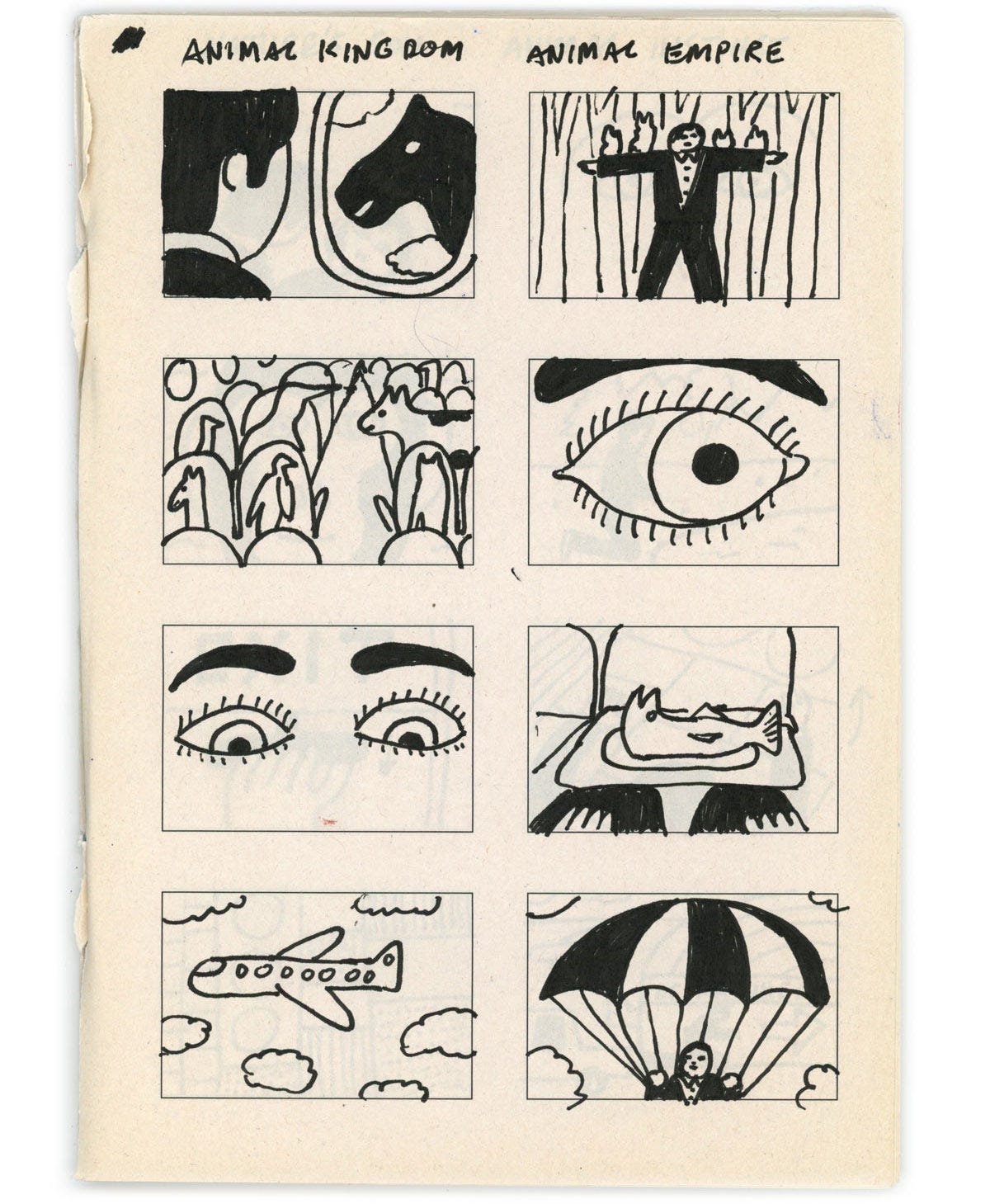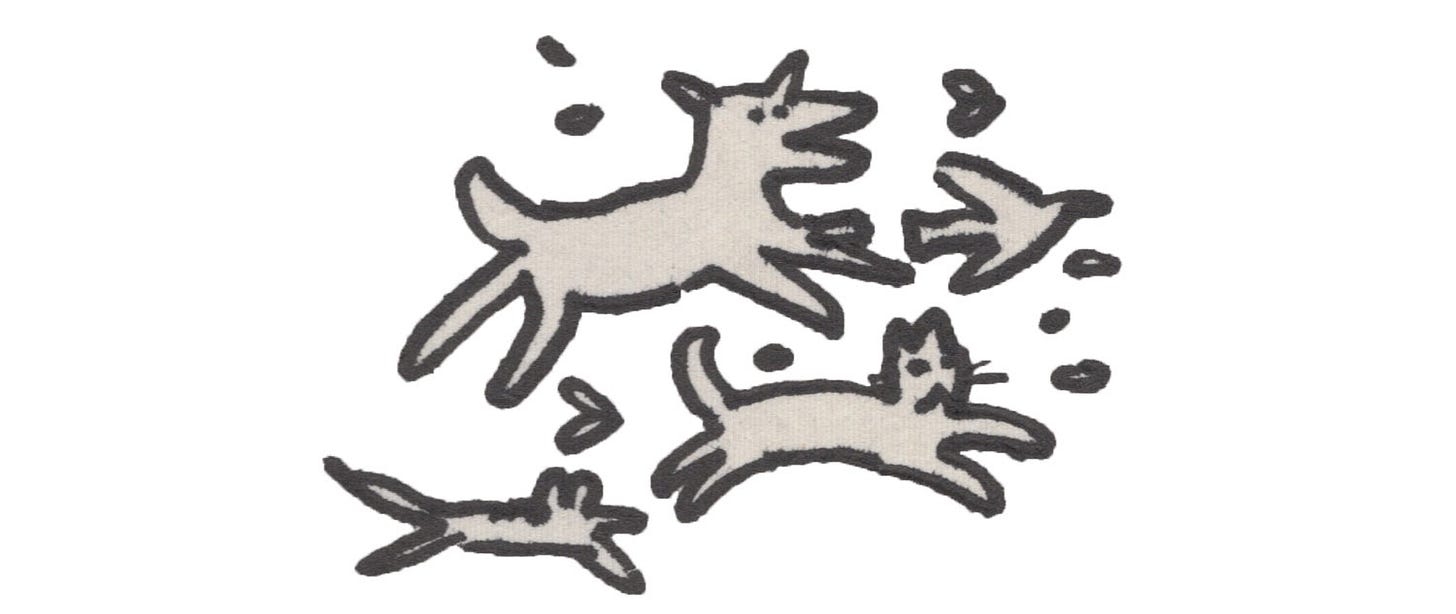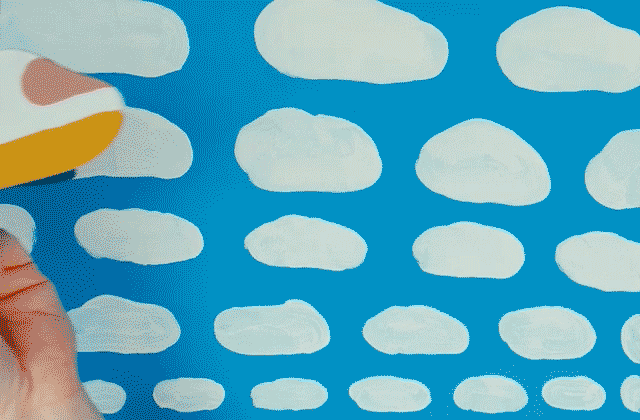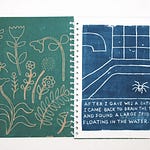Most experts will tell you the correct method for making a film is to write a script, turn it into a storyboard, and simply “shoot the boards.” That’s never worked for me.
Last year, I set out to make a narrative animation, and after several failed attempts using expert advice, I realized I needed to start with images, not words. So I began making quick sketches in an old Muji storyboard notebook. Each new drawing suggested another, and somewhat magically, a story began to take shape. Dozens of possible plot lines were explored and discarded until I finally had a simple story, complete with a twist ending.
The drawn scenes were completely out of order, so I scanned my notebook and began arranging the images in After Effects. This is known as an animatic—a crudely animated storyboard that studios use to finalize the edit before the costly stage of animation begins.
Early on in the process, I shot some animation tests. The idea was that everything was going to be animated in-camera. In other words, I planned to move everything by hand using flat painted puppets—basically, an edited puppet show.
I had recently recorded a heavy guitar jam that matched the intensity of the chase scenes, so I used that as my soundtrack. I decided to make all the sound effects using only guitars: newspaper slamming down, barking dogs, airplanes… which added to the general chaos.
So there I was. I’d planned the story. Planned the look. Planned the music. I watched the animatic all the way through and realized I was done. Of course, there were still dozens of paintings to make and scenes to shoot, but I’d planned it out so well that it was just a matter of “shooting the boards.” And my mind had already moved on.
I sent the animatic to a few friends, then filed it away in a forgotten corner of my computer. Instead of seeing this as a failure, though, it’s helped me learn a valuable lesson: the magic is in the discovery, not the execution.
Now, when I start a new project, I make sure not to plan everything out. I begin without a storyboard and I trust that one scene will lead to another. By the time I’m done, I have a completed film and not just a completed plan.
P.S. A quick note about the animation tutorials...
Thanks to everyone who took the poll last week and asked such great questions. Over 60% of you said you’re interested in using free tools for animation, so this week I experimented with ways to translate my After Effects workflow into free apps. After running into several roadblocks, I realized it’s far more interesting to discover what an app can do, rather than force it to be something it isn’t.
So here’s what I suggest: let’s explore Stop Motion Studio together. There’s a $6 pro app, along with a free version. I’m going to spend the next week or so experimenting with it and posting my tests on Substack Notes. Then I’ll compile my insights and discoveries into an email. I haven’t used this app before, so we’ll be learning together.
Looking forward to sharing more soon! Thanks.


















Share this post